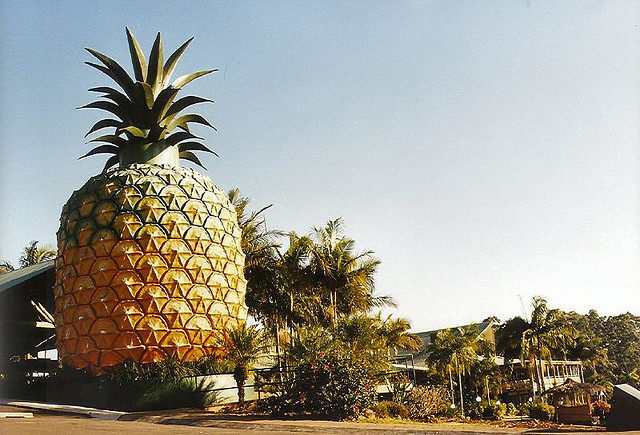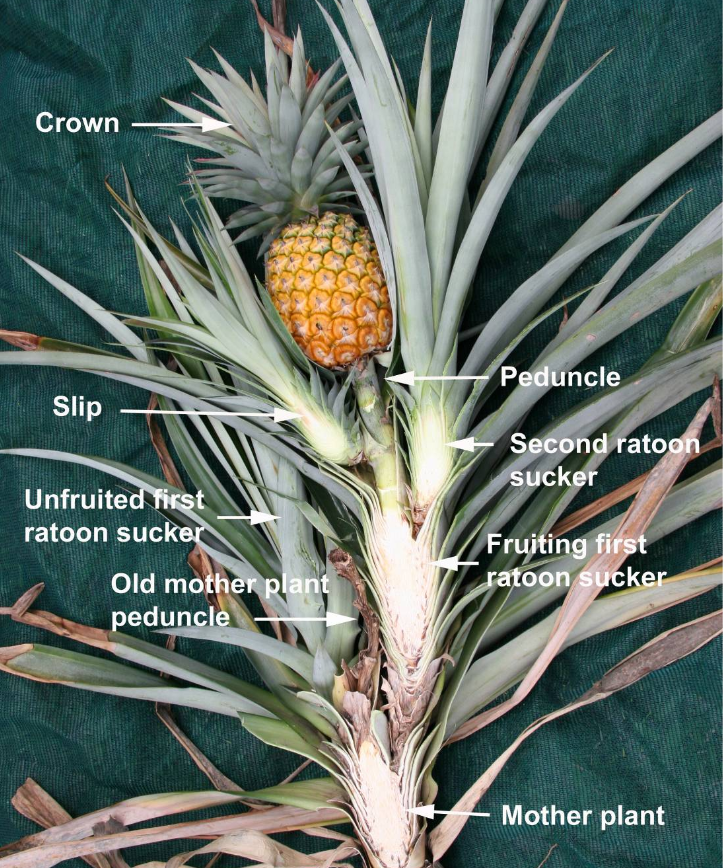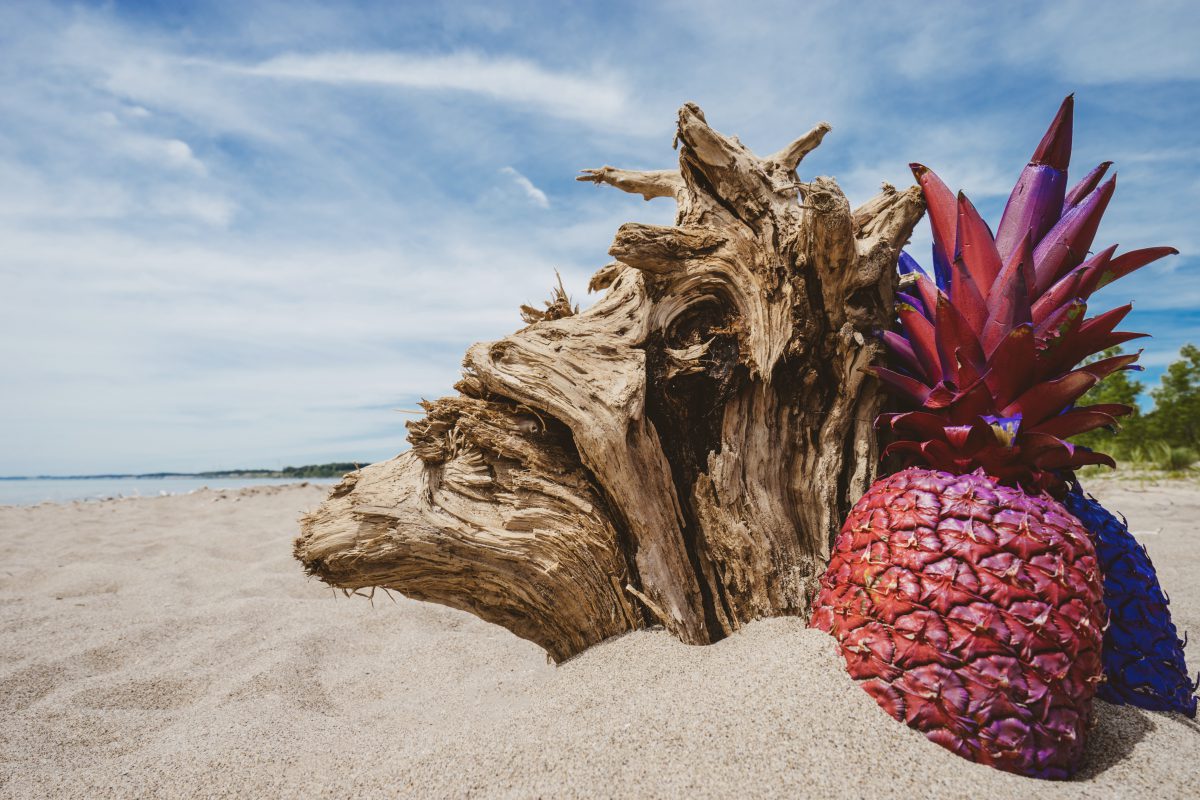We all know pineapples are good for you, but there’s also loads of fun facts about pineapple worth learning.
The ‘Queen of fruits’ is a little different than most other tropical fruits, which makes it so interesting to compile and provide for you, here, our ultimate pineapple facts.
1.When pineapples were first brought back to Europe from the ‘New World’ by explorers and settlers, there was a race among the best pomologists (fruit growers) of the day to grow the first pineapple in Europe. The honor of the first pineapple to be grown in Europe was earned by a Dutch businessman Pieter de la Court in 1658.
2. Pineapples likely originate from the geographical area between Paraguay and Southern Brazil. Little, however, is known about the real origin of the modern domestic pineapple.
3. The pineapple was first encountered by Columbus and his explorers in 1493, located on the island of Guadeloupe.
4. Due to the immense cost of either importing or growing local pineapples, up until the 19th century, in Europe they were prized as a symbol of wealth. Their crowns, in particular, were coveted to be used on fancy dining tables on special occassions.
4. In 2017, the world produced 27.4 million tonnes of pineapples. Leading the way in pineapple production as the largest producers are Costa Rice, Brazil, Thailand and the Philippines.
5. Raw pineapple is mainly made up of water (85%), carbohydrates (14%), a little bit (0.5%) of protein and almost negligible fat.
6. The pineapple as a symbol is traditionally one of welcoming hospitality. Carved pineapples are often found in home decor, like door knockers, bannister ends and finials.
7. Pineapples are often associated with Hawaii, due to that island’s historical growing of the fruit with the Dole company in the early 1900s. Now, however, very few pineapples are grown in Hawaii and the last cannery was closed in 2006. ‘Hawaiian’ Pizza, with pineapple, is named after this association.
8. The ‘Big Pineapple‘ is a tourist attraction in Queensland, Australia, which is on the country’s tourism heritage list. The Big Pineapple is 16 meters (52ft) high, and was first unveiled to the public on 15 August, 1971.

Source/credit:http://www.flickr.com/photos/marj_k/75345471/sizes/z/in/photostream
9. For those unsure on how best to cut a pineapple, there are pineapple cutters available to buy (online, usually). The tool usually takes the form of a hand-held cylindrical utensil, with a circular-style blade at the end for cutting the pineapple. The pineapple cutter is designed to cut the flesh of the pineapple into a spiral while removing the core. You can buy pineapple cutters in different sizes depending on the size of your pineapple, to avoid wasting too much of the flesh.
10. The name pineapple originates from what we now call ‘pine cones’ (due to the similar textures). European explorers decided to call the fruit pineapples, due to their similarity and resemblance to pine cones.
11. In a lot of tropical countries, especially in South East Asia, you’ll find street and road vendors offering sliced pineapples as snacks. They are super cheap and taste much better than those exported to western countries.
12. Ever heard the saying “pineapple eats you, as much as you eat it?” This is partly true, due to the presence of bromelain in pineapple. Bromelain is a protein-digesting enzyme and it does indeed try to ‘eat’ you by breaking down the cells in your mouth until it’s neutralized by saliva.
13. There’s a well-known old wives’ tale that eating pineapple while heavily pregnant can induce labor. This is currently unproven by rigorous scientific testing.
14. It can take up to three years for a single pineapple to mature and grow fully.
15. There are several ‘propagating materials’ on a pineapple, which you can use to grow new pineapple plants. You can take the crown (top), or else the slip and suckers from the parent plant.

16. There are several world records associated with pineapples. Some of our favorites are: Ashrita Furman, who holds the record for “Most pineapples on heads cut in half in 30 seconds” at 22, and Christine McCallum who holds the world record for the Heaviest Pineapple, weighing in at 8.28kg and standing 66cm high.
17. Speaking of world records, the Dole Pineapple Farm in Oahu, mentioned in our article on the Best Pineapple Farms, contains the huge three acre garden maze. It holds the record for the largest maze in the world
18. Almost all parts of a pineapple can be used to help in the production of vinegar, and alcohol. That’s why bad pineapples often smell of vinegar.
19. Once harvested, pineapples do not continue to ripen. They may become a little sweeter, but the ripest pineapple is always the one that is freshly picked.
20. There are lots of different types of pineapple. The most commonly exported type is the MD-2. Other common types include the Smooth Cayenne pineapple, and the Red Spanish pineapple.
We’ll be adding to this list over time as we spot more interesting pineapple facts worth including. If you find any pineapple facts that you think should be included in this list, please comment below!


Utterly great content, really enjoyed reading!